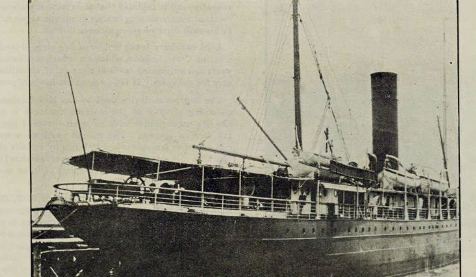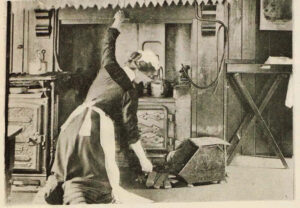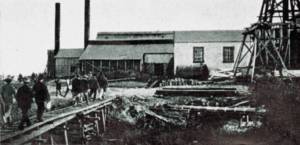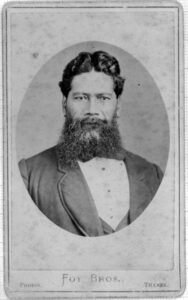As part of a Valley Profile series, MEGHAN HAWKES explores our local history by seeking out stories of life and death in the Thames Valley.
John Morrison took an axe to the door to burst it open only to find a man in his pajamas lying face downwards on the floor.
John could feel no pulse and immediately sent for the police. John, licensee of the Royal Hotel, Thames, had been alerted to the strangely silent locked room by Reed, the hotel porter, just after six that October evening in 1895.
The occupant did not seem to care to be disturbed in the mornings, nor did he care for breakfast.
He had his dinner and tea regularly every day up until the day before. He had arrived at the hotel three days previously having come by the steamer, Rotomahana, from Auckland.
He told John he had lately arrived in Auckland from Australia and was travelling for his health. He asked for a bed, and was given room No 19. He said his name was Williamson.
When Constable Bern arrived, he telephoned for Dr Callan, who was soon on the scene.
The man seemed to be between 35 and 40 and appeared to be either a colonial or an Englishman by birth.
His only luggage was a small bag, containing a shirt, four or five collars, two pair of socks, and some handkerchiefs. He had 9 shillings 6 pence on him. He had no letters, no cards, and no writing of any kind beyond a map. He had nothing with him to identify him.

Amongst his personal effects were a bunch of small keys, suggesting he had a large quantity of luggage somewhere.
Sergeant Gillies communicated with Auckland and in reply received a telegram from Inspector Hickson – “A steerage passenger named Williamson arrived here by the Tasmania on September 23rd. Nothing known of him, and no other passenger of that name can be traced at shipping offices here.”
Further investigations revealed that a man answering somewhat to the description of the deceased had stayed a few days at Coombes’ boarding house in Albert St, Auckland. This man, who gave his name as Brown, but told another it was Williamson, left for Thames in early October with the intention, so he said, of returning a few days later but he had not returned since.
The boarding house staff could not identify the clothes as belonging to their Williamson, and none of the keys found among the man’s personal effects could open the portmanteau left by him.
Among the clothing were a dark grey Inverness cape, a blue serge suit, and a pair of tan boots. The tags on the neck of the coat and cape had the maker’s name cut out. Anyone knowing something about the man was requested to communicate with the Inspector.
An inquest on the man calling himself Williamson found that he had told John Morrison he was under medical advice to travel and walk about a good deal.
He used to regularly have a whisky and soda or whisky and water before going to bed but was not addicted to drink.
Dr Callan said that death was due to syncope, or failure of the heart’s action. Constable Bern stated that nothing had been discovered to give any clue as to the man’s identity.
The jury returned the verdict that the cause of death was failure of the heart’s action, caused by longstanding liver disease.
The mysterious stranger was said to have come across as a highly respectable and educated man of refined habits. Two books were found among his effects – a work on the kola plant, printed in Detroit, Michigan, and another entitled Planetary and Stellar Worlds.

In an act of kindness, John Morrison arranged and paid for the man’s burial at Tararu cemetery.
He closed his hotel for the afternoon and the funeral was carried out as respectably as if the stranger had died amongst his own people. The coffin was borne to its resting place by a few good hearted citizens who felt the stranger in a strange land should not be carried to his long home without a friendly hand.
Newspapers asked that in case the news should meet the eye of any person in Sydney who could give information that would lead to the identification of the man; he was about 5ft 9in tall, of moderately slight build, fair hair, and wearing a slight moustache but no beard.
He was temperate in his habits. He had been long suffering from a diseased liver and weak heart.
He gave his name as Brown or Williamson and it was supposed he came to Auckland from Sydney on the ship SS Tasmania, then to the Thames for a walking trip through the goldfields.
In November, the police received two letters – one from a lady named Williamson residing in Victoria, stating that she had seen a notice of the death of a man of that name at Thames, and as a relative of hers was missing she requested a description of the deceased.
Sergeant Gillies complied with the request, giving full particulars. The second letter was from Mrs H C Williamson, enclosing a photo of her husband, whom she last heard of 15 months before, when he was in Sydney. The photo was shown to Mr Morrison, Dr Callan, and others, and they all agreed that it bore no resemblance whatever to the deceased.
There were no more leads as to the man’s identity and mystery and peculiarities followed him to his grave – plot registers record him as being buried under the name Williamson at both Tararu and Shortland cemeteries.
He was still unidentified three years later when records suggest a John Conway, who died at the Tararu Old Men’s Home, was buried in the Tararu plot with him.




